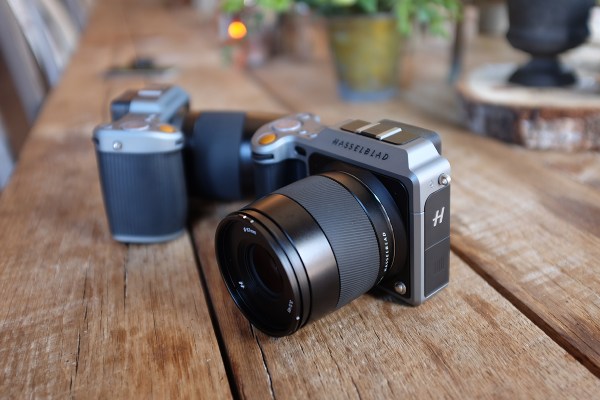Hasselblad picked a rather unique location — the Absolut Elyx house — in the Meatpacking District for me to meet their reps and play with the new X1D. For a quick refresher, it’s the world’s first compact medium-format camera, announced just this morning.
Given that the X1D is still in pre-production until its launch in August, I wasn’t allowed to shoot my own 50MP images and upload them here. However, I can say that the X1D has the clarity, focus and image quality you’d expect of a 50 megapixel camera, and to top that off, with Hasselblad’s own glass, the shots I took were nothing short of dreamy.
The moment you switch the camera on, it becomes obvious that Hasselblad took design cues from the just-launched H6D medium-format camera, simply tweaked it for the screen size and controls and kept it user-friendly. Plenty of touch options work alongside the button interface to give the shooter options.
What’s it like to hold? It’s so light considering the seriousness of the electronics that it’s silly. Milled from a single block of aluminum and weather-sealed, it also means it feels great, smooth and is ergonomic.
Personally, I think the first thing that amateur photographers will find interesting about the X1D is that it offers (at least on paper) the quality that a huge medium-format camera does, without the associated size and weight.
For pros and intermediates, the X1D is probably going to fall between either an ultimate creative tool or a risky investment, especially coming from rival lens systems from Sony, Canon and Nikon, whose catalogs eclipse the two lenses Hasselblad will offer at launch.
[gallery ids="1342233,1342231,1342230,1342229,1342226,1342223,1342222,1342221,1342219,1342218,1342217,1342215,1342214,1342213"]
The X1D will retail for $8,995 come its ship date in August, for the body only. The two native XCD lenses available at launch include a 45mm and 90mm for $2,395 and $2,695, respectively. Support for Hasselblad’s older, H series lenses will be possible through an adapter, and that will retail for $329 around the camera’s ship date.
Of course, I’ll know more about how this camera behaves in the review, closer to August.
